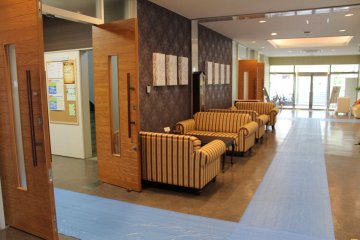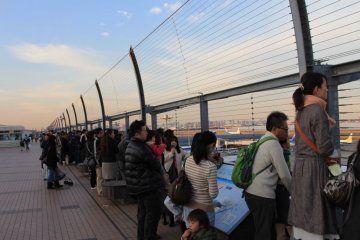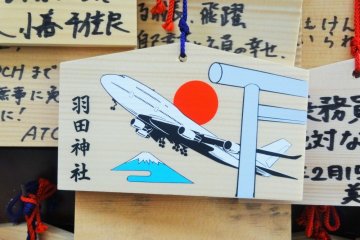Just a short distance from Haneda Airport, visitors to Japan can get their first taste of traditional culture at the Haneda-jinja Shrine.
Haneda-jinja Shrine can trace its history back eight hundred years to the Kamakura Period. In the Edo Era (1603-1868), the Tokugawa shoguns who resided in central Tokyo used to make pilgrimages to the shrine to pay their respects. Today, it is more likely to be visited by airline employees and those seeking the reassurance of a safe journey. Even the prayer plaques hanging near the main hall feature the shrine’s main torii gate with an airplane flying over it and visitors can purchase charms that provide protection during travel.
In the rear of the main hall, a small five-meter mountain known as Haneda Fuji mimics Japan’s largest peak. The small mound, built at the outset of the Meiji Period using volcanic rocks from Mt Fuji itself, was created to give pilgrims the opportunity to “scale” the famous mountain without actually venturing to Yamanashi Prefecture.
Every year, on the last weekend in July, the shrine holds a colorful festival where numerous mikoshi (portable shrines that house the resident divinities), carried by 3,000 people, are paraded through the streets. Through a crowd of 30,000 people, the mikoshis are carried in a special way called “yokota” so that it resembles a boat sailing on a rough ocean.









